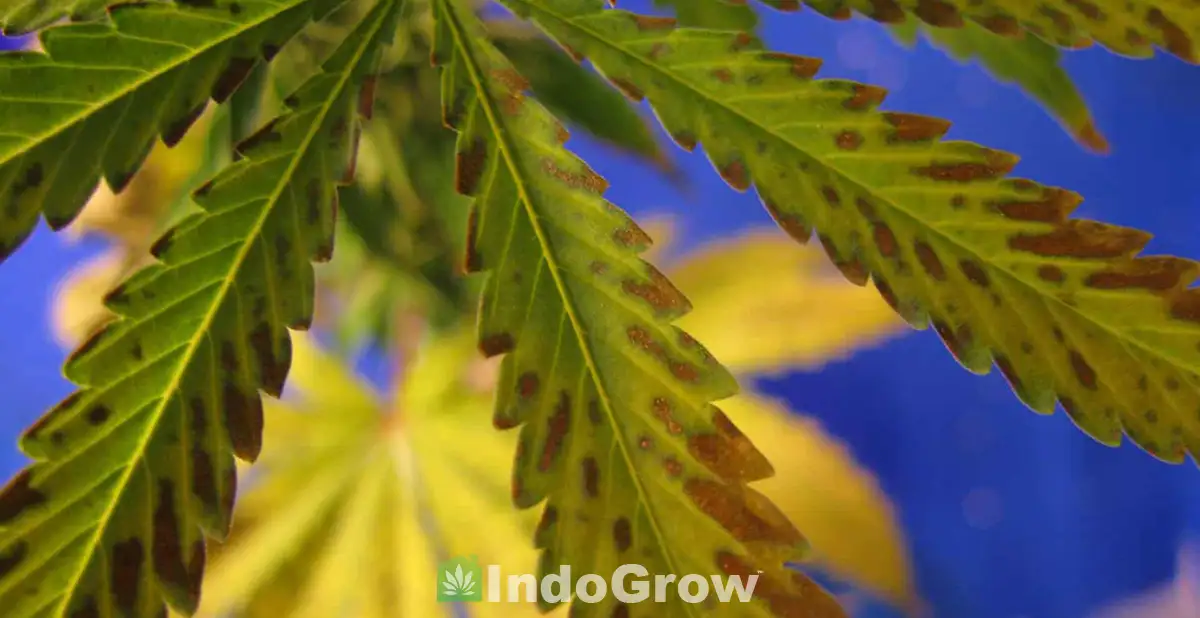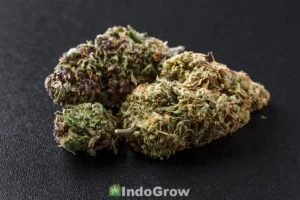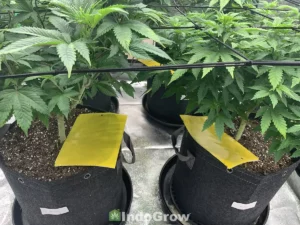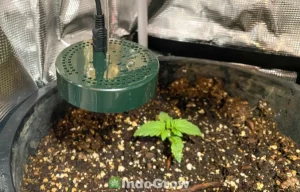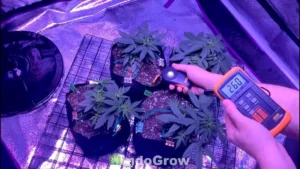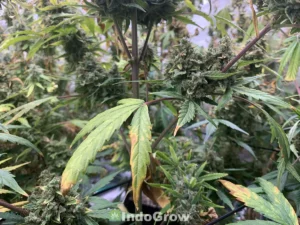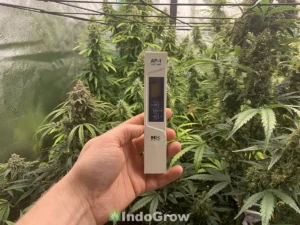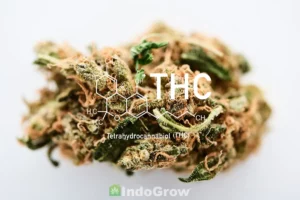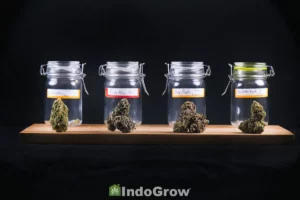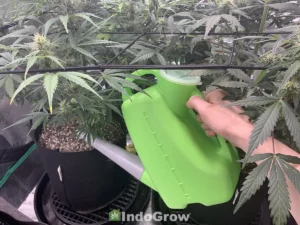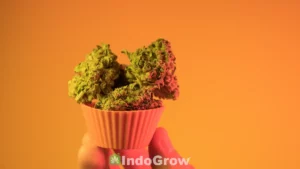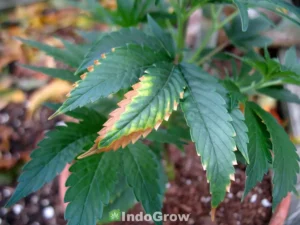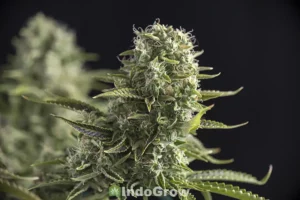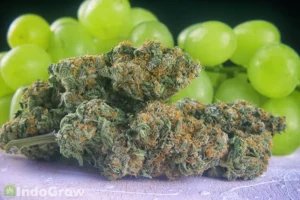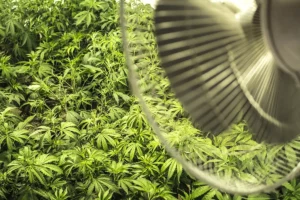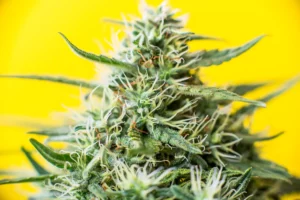Cannabis phosphorus deficiency or toxicity can seriously hurt your harvest. Phosphorus is an essential macronutrient for cannabis plants, and plants with ready access to phosphorus will grow faster and produce larger buds.
This article will discuss the symptoms of phosphorus deficiency and toxicity, suggest solutions to these imbalances, recommend sources of phosphorus, and more.
Table of Contents
- Why is Phosphorus Important for Cannabis Plants?
- Phosphorous Deficiency Symptoms in Cannabis
- How Much Phosphorus to Give Cannabis Plants?
- What is the Proper NPK ratio for Cannabis Plants?
- How to Fix Phosphorous Deficiency in Cannabis Plants
- Bloom Fertilizers and PK Boosters
- Organic Phosphorus Sources
- Cannabis Phosphorus Toxicity Symptoms
- How to Fix Phosphorus Toxicity in Cannabis
- Conclusion
Why is Phosphorus Important for Cannabis Plants?
Phosphorus is one of the three primary macronutrients consumed by Cannabis plants alongside nitrogen and potassium. Cannabis plants use phosphorus to synthesize carbohydrates and proteins to store energy from photosynthesis. Reliable supplies of bioavailable phosphorus will lead to stronger roots, bigger flowers, shorter veg time, and overall increased vitality in your cannabis plants.
Phosphorous Deficiency Symptoms in Cannabis
Phosphorus is an essential nutrient for cannabis, and a lack of available phosphorus in the growing medium can easily lead to phosphorus deficiency in marijuana. The next two sections will compare cannabis phosphorus deficiency symptoms in vegetative and flowering plants.
Vegetative Symptoms of Phosphorous Deficiency
Cannabis phosphorus deficiency symptoms during the vegetative stage may include slowed or fragile new growth, darkening or discoloration of leaves, yellowing or necrosis of the lower leaves, decreased root mass, and sensitivity to temperature swings.
Because phosphorus is a mobile nutrient, the plant is able to strip lower leaves of their phosphorus in order to feed new growth. This will usually cause symptoms like discolored, warped, or dying leaves to appear first at the very bottom of the plant and move upwards as the deficiency progresses. Without intervention, your plant’s leaf loss will continue to accelerate until much of the plant is defoliated.
However, because phosphorus is mobile and needed in relatively low quantities during this stage of development, phosphorus deficiency in vegetative plants is uncommon. Symptoms of phosphorus deficiency in marijuana may appear in the mid to late vegetative phase, or be subtle enough that they are not noticed until flowering begins and the plant’s demand for phosphorus increases.
Flowering Symptoms of Phosphorous Deficiency
In the early stages of cannabis phosphorus deficiency, lower leaves will darken and become thick, curled, rough, and sometimes glossy. Dark patches may take on a blue or bronze hue. As the symptoms progress, the leaves will develop yellow patches before eventually dying and falling off the plant.
In addition to foliar symptoms, the petioles connecting the leaves to their stems may take on a purple or brown color. Flowering will be significantly slowed, and flowers will be less fragrant than usual. Because phosphorus is so closely tied to the storage of energy from photosynthesis, plants in a severe deficiency will begin rapidly destroying their own lower leaves to keep their new foliage and flowers from starving.
How Much Phosphorus to Give Cannabis Plants?
Research from NCSU has shed some light on the ideal PPM values of phosphorus for cannabis plants. Phosphorus levels of 11.25 PPM appear to support the most robust vegetative growth, while P levels of 22.5 PPM during flowering led to the largest bud weight at harvest.
Although measuring nutrients in ppm values can be highly useful for commercial growers, most home growers are using premixed nutrient solutions that contain all three primary macronutrients (NPK). For this reason, home growers usually pick their nutrient solution based on the NPK ratio rather than PPM. The section below will discuss NPK ratios in greater detail.
What is the Proper NPK ratio for Cannabis Plants?
Cannabis will need different NPK ratios at different life stages, with the amount of potassium needed in the mixture increasing as the plant matures. For vegetative cannabis plants, look for an NPK ratio of around 3-1-1. Young plants need relatively little phosphorus compared to nitrogen to grow well.
In the early flowering phase, transition your feedings to an NPK ratio of around 1-3-2, then move on to a ratio of 0-3-3 in late flowering. This large boost in potassium will help your plant produce robust, potent flowers.
When you are selecting a fertilizer for your plants, remember that the ratio between the numbers is more important than the number itself. For instance, 3-1-1, 6-2-2, and 9-3-3 all have the same base ratio of NPK nutrients, they are just bottled in different concentrations. A 3-1-1 solution has 1% potassium by volume, while a 9-3-3 solution has 3% potassium by volume.
Although this may seem significant at first glance, the manufacturer’s directions will advise you on how much each fertilizer should be watered down before use. If you are trying a new fertilizer on your plant, start at ¼ to ½ the recommended dose and slowly increase over the next week or two to avoid shocking your plant or overdosing it on nutrients.
Home growers should feed their plant only phosphorus in an attempt to cure a deficiency. Feeding nutrients to your cannabis plants in an unbalanced ratio can cause nutrient lockout of other essential nutrients. In addition, many phosphorus deficiencies are actually caused by improper pH, which will be discussed in more detail below.
How to Fix Phosphorous Deficiency in Cannabis Plants
The most common cause of phosphorus deficiency in marijuana is improper soil pH levels. If your Ph is too high, phosphorus in the soil will not be biologically available for the plant no matter how many nutrients you feed it.
Although some phosphorus can be absorbed by your plant up to a pH as high as 7, the ideal pH range for cannabis to absorb nutrients is between 5.8-6.2. To determine your soil pH, use a pH test strip or pen on the water in your plant’s runoff tray.
If the pH is out of ideal range, the next step is to flush your plant with pH adjusted water. A full flush should use a volume of water about three times the volume of soil your plant is currently growing in. Next, test the pH to see if it is within the ideal range of 5.8-6.2.
After flushing the soil, be sure to water with NPK fertilizer to replace the mineral salts lost during the flush. For future waterings, use pH up or pH down solutions to keep your water within range. Test the pH and add adjusters after adding NPK or other nutrient blends, as these may change the pH slightly as well.
For organic growers, products such as lime can be used to raise pH, while sulfur or aluminum sulfate will lower pH. Bear in mind that these products can take several days to several weeks to take effect, so it is best to add them to your soil as early as possible.
If your pH is within ideal range and your plant is still experiencing phosphorus deficiency symptoms, you may need to increase the amount of NPK fertilizer you use. If you are already using the recommended dose, consider fertilizing more frequently. Never fertilize with phosphorus alone, or you may inadvertently cause nutrient lockout of other nutrients like zinc, calcium, magnesium, iron, or copper.
Bloom Fertilizers and PK Boosters
Below you will find information on some of the most popular brands of Bloom fertilizers and PK boosters. These fertilizers are all high in phosphorus and are formulated to support robust flowering.
General Hydroponics FloraBloom
Florabloom is a 0-5-4 NPK liquid fertilizer by General Hydroponics. It is often used as the last part of their three part Flora Series, and is intended for use on flowering plants. It is available in a wide variety of sizes on its own or in a bundled set with Floragrow and Floramicro.
FoxFarm Tiger Bloom
Tiger bloom is a 2-8-4 NPK liquid fertilizer produced by Foxfarms. Tiger bloom can be used in hydroponics or soil systems, and can also be applied as a foliar spray. This fertilizer should be applied to flowering plants, and is also available as part of a trio including Foxfarms Big Bloom and Grow Big.
Nutrients Bloom Boost
Bloom Boost is a 0.4-5.0-3.0 NPK liquid fertilizer by TPS nutrients. This fertilizer can be used throughout the flowering stage, with differing concentrations suggested on their website for early, middle, and late flowering.
FoxFarm Beastie Bloomz
Beastie Bloomz is a 0-50-30 NPK granular fertilizer by Foxfarms. This fertilizer is meant for plants in the late flowering stage to give them a final boost of phosphorus and potassium. It can be dissolved in water before use in both hydroponic and soil systems.
Botanicare Hydroplex
Hydroplex bloom enhancer is a 0-10-6 NPK liquid fertilizer by Botanicare. This fertilizer is recommended for use in weeks 3-8 of the flowering phase, and additionally contains 0.5% magnesium.
Organic Phosphorus Sources
For organic growers, a range of natural products such as bone meal and bat guano can be used to increase cannabis phosphorus levels.
Bone Meal
Bone meal is high in both phosphorus and calcium, making it a valuable source of nutrients for an organic grow. As the name suggests, bone meal is made of cooked, sterilized and ground bone powder. Cattle bones are the most common source, although pork or fish bone meal are also available.
Bone meal contains approximately 15% phosphorus by volume, and breaks down slowly, meaning that you will only need to fertilize a handful of times over the course of your cannabis plant’s life cycle. Fish bone meal will break down in the soil faster than other bone meals, so it will begin working faster but may need to be applied slightly more often.
If you are using bone meal, be sure to add sources of nitrogen and potassium as well, since bone meal is not a complete NPK fertilizer.
Bat Guano
Bat guano is an organic fertilizer made from dried bat feces, and it is high in both nitrogen and phosphorus. Bat guano has an NPK ratio of approximately 10-3-1, and additionally contains beneficial soil microbes that may stimulate stronger growth in your plants.
Because of its high nitrogen levels, bat guano is best used in the vegetative stage for cannabis plants. You will need to add a source of potassium to your nutrient blend as well to ensure that your plants are receiving the proper ratio of NPK nutrients.
Cannabis Phosphorus Toxicity Symptoms
Cannabis phosphorus toxicity is rarer than phosphorus deficiency, but symptoms may include yellowing of the upper leaves, burnt leaf tips, and slowed growth. These symptoms are caused by excess phosphorus locking out other nutrients such as magnesium and calcium, so symptom progression will often mimic that of a magnesium deficiency. Phosphorus toxicity usually comes on slowly, and may take several weeks to produce symptoms.
How to Fix Phosphorus Toxicity in Cannabis
If you suspect phosphorus toxicity in your cannabis plants, the first step is to flush the soil with pH adjusted water. This will remove built up nutrient salts from the soil. Next, add nutrients back into the soil at a lowered dosage. Check the manufacturer’s instructions to ensure you are using an appropriate dosage and NPK ratio for your plant’s size and life stage.
Remember to never feed exclusively with phosphorus, since your plant needs nutrients in specific ratios in order to thrive. If you are unsure about mixing nutrients at home, it’s often easier for home growers to buy pre mixed NPK fertilizers and follow the instructions on the bottle for dosing.
Conclusion
Phosphorus is one of three primary macronutrients consumed by cannabis plants, and access to phosphorus is essential for your plants to produce a large flower harvest. The most common cause of phosphorus deficiency in cannabis is improper soil pH. Maintaining a pH of 5.8-6.2 and fertilizing with a life stage appropriate NPK fertilizer will ensure that your plant has plenty of phosphorus to grow large and healthy.

Rocky Horton
Author
Rocky Horton is an experienced cannabis grower and the founder of IndoGrow. The IndoGrow editorial team has over four decades of combined growing experience. Learn more.

